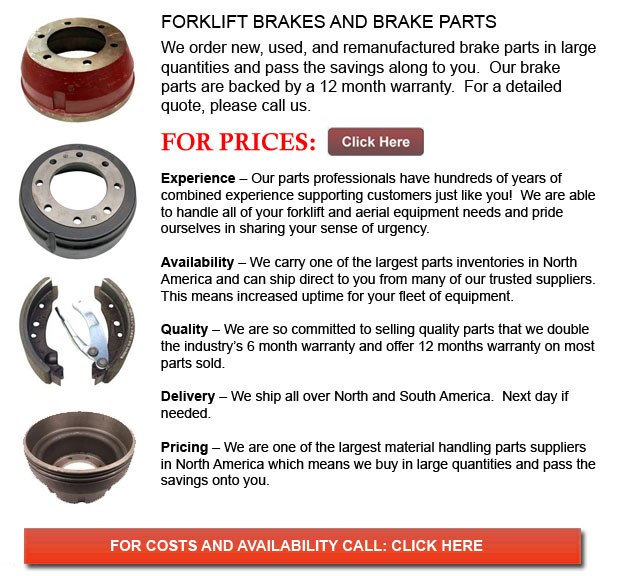
Forklift Brakes - A brake where the friction is supplied by a set of brake pads or brake shoes that press against a rotating drum unit called a brake drum. There are several specific differences between brake drum kinds. A "brake drum" is normally the explanation given whenever shoes press on the interior outside of the drum. A "clasp brake" is the term used to describe if shoes press against the exterior of the drum. Another type of brake, called a "band brake" utilizes a flexible belt or band to wrap round the outside of the drum. Where the drum is pinched in between two shoes, it could be referred to as a "pinch brake drum." Like a typical disc brake, these kinds of brakes are quite uncommon.
Prior to nineteen ninety five, old brake drums needed consistent modification periodically to be able to compensate for drum and shoe wear. Long brake pedal or "Low pedal" travel is the dangerous end result if adjustments are not executed sufficiently. The vehicle can become dangerous and the brakes can become ineffective whenever low pedal is mixed along with brake fade.
There are a variety of Self Adjusting Brake Systems existing, and they could be categorized within two major kinds, RAD and RAI. RAI systems have in-built tools that prevent the systems to be able to recover when the brake is overheating. The most popular RAI manufacturers are AP, Bendix, Lucas, and Bosch. The most well-known RAD systems include AP, Bendix, Ford recovery systems and Volkswagen, VAG.
Self-repositioning brakes generally utilize a device which engages just if the motor vehicle is being stopped from reverse motion. This stopping approach is acceptable for use where all wheels make use of brake drums. Most vehicles nowadays use disc brakes on the front wheels. By functioning only in reverse it is less possible that the brakes will be applied while hot and the brake drums are expanded. If adapted while hot, "dragging brakes" could occur, which increases fuel consumption and accelerates wear. A ratchet device which becomes engaged as the hand brake is set is another way the self adjusting brakes could operate. This means is only suitable in applications where rear brake drums are used. When the emergency or parking brake actuator lever goes beyond a certain amount of travel, the ratchet developments an adjuster screw and the brake shoes move toward the drum.
Placed at the bottom of the drum sits the manual adjustment knob. It could be adjusted utilizing the hole on the other side of the wheel. You would have to go beneath the vehicle along with a flathead screwdriver. It is extremely essential to adjust every wheel equally and to move the click wheel correctly for the reason that an unequal adjustment could pull the vehicle one side during heavy braking. The most effective method so as to make certain this tedious task is accomplished carefully is to either raise each and every wheel off the ground and hand spin it while measuring how much force it takes and feeling if the shoes are dragging, or give every\each and every one the exact amount of manual clicks and then do a road test.
![]() Click to Download the pdf
Click to Download the pdf
Forklift Parts
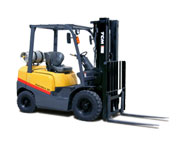
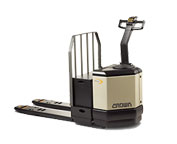
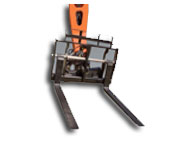
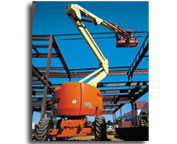
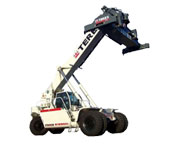
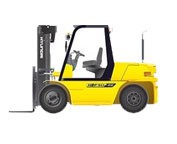
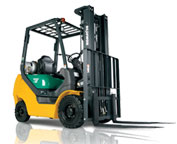
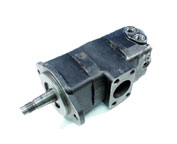
Lift Parts Express
TOLL FREE: 1-888-695-7994
LOCAL: (408) 329-1759
1030 East El Camino Real #408
Sunnyvale, California
forkliftpartssunnyvale.com
Email Us
About Us


